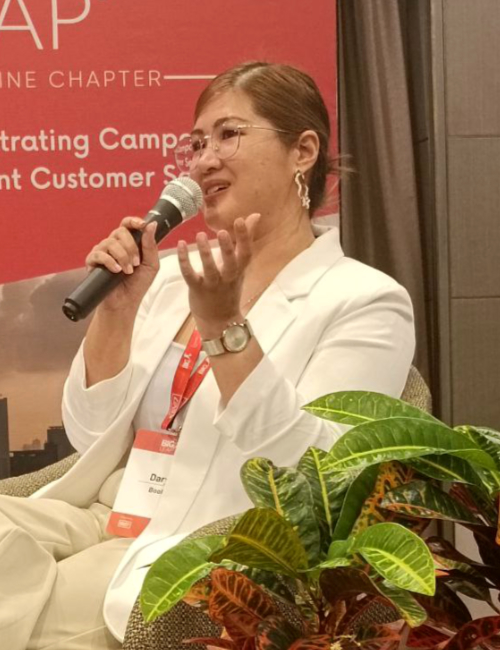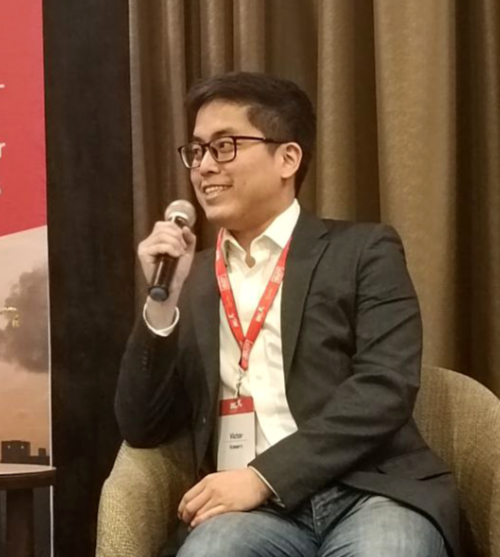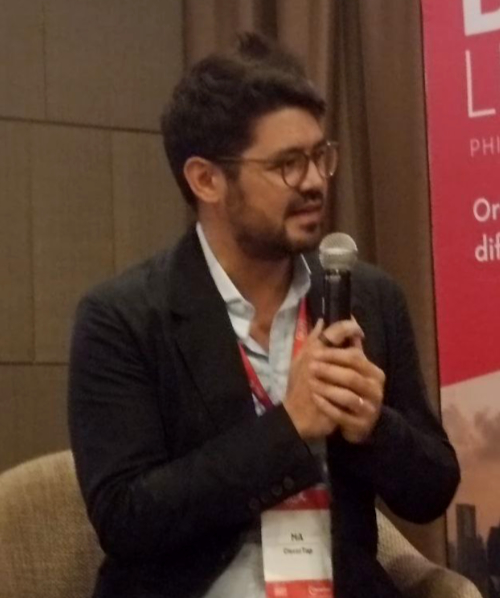While the accelerated digital transformation during the pandemic kept many businesses afloat, the work is far from over when it comes to customer retention.
Despite the success of digital-first brands during the lockdowns, the return of brick-and-mortar shops now threatens the business of several niche markets. How then can organisations retain their customers amid the ongoing tug-of-war between physical shops and online stores?
To discuss these details, several industry experts gathered for a panel titled “Retention Playbook Philippines: Orchestrating Campaigns for different Customer Segments,” organised by tech media platform e27 and hosted by omnichannel SaaS company CleverTap.

According to Daryll Santillan, Chief Marketing Officer of F&B solutions provider Booky, the playbook for growing the business has remained the same, with organisations placing their bets on customer acquisition.
However, more emphasis should be given to retaining customers, Santillan noted, since acquiring new ones is considerably more expensive.
“We’ve discovered this by helping many of the major food chains transform digitally. All of them were getting so much traffic, but they didn’t have access to data they could remarket to, especially those who would love to have a longer-term relationship with their brand. They thought they could do it in-house and build everything themselves, but they didn’t know how to begin,” she recalled.
Birthing pains
Like their customers, Booky also had to make several pivots during the pandemic.
Previously a consumer-focused business, the company first transitioned into enabling brands to have a direct relationship with their customers.
“It has been a struggle, because people still know Booky from our ‘buy one, get one’ days. Now, we have to reintroduce ourselves beyond just delighting consumers with these deals, especially since in terms of targeted food discovery, we’re the only one remaining in the space,” Booky CMO Daryll Santillan observed.

Indeed, F&B is a fickle industry, as Victor Lim, Co-Founder and CEO of ghost kitchen operator Kraver’s, can attest to. Recognising that the pandemic has been the biggest disruptor recently in the industry, Lim said it affected how brands were positioning themselves towards consumers.
“There was a big change where suddenly, everything was about the digital marketing side only, and everything that mattered was how big a brand was on Grab, or how visible it was, including factors such as thumbnails, product names, and more,” he explained.
Kraver’s was established during the pandemic and saw an opportunity to tap into changing customer behaviours toward food. People who never used food delivery apps or e-wallets before the pandemic have now come to rely on them.
Although offline F&B businesses are making a comeback, Lim observed that another market shift is taking place. Nevertheless, businesses like Kraver’s are banking on what they have established over the last couple of years to weather the changes.
“There’s this shift, but it’s not returning to what it was two or three years ago, because now people have already adopted this digital behaviour. Although people are already used to this behaviour, they can’t necessarily afford to order via Grab every single day. So I would definitely like to call it ‘the next normal,’ rather than returning back to normal, because it really is a different market now,” the CEO pointed out.
Meanwhile, as the industry moves forward, digital wallet PalawanPay acknowledges the need to unlearn some things.

As a member of the Palawan Pawnshop Group, the e-wallet company benefits from the over three decades of operation of its sister company, Palawan Pawnshop. Taking off from branch-based marketing with Palawan Pawnshop’s 3,000-plus branches, PalawanPay is now exploring product lead growth using digital channels.
“When we first started out, we had a PalawanPay campaign, then we had a Palawan Pawnshop campaign. One key thing we changed in 2023 is that these two are one and the same, and the way we get to see this is by reframing our target market,” said JC Medina, Head of Innovation, PalawanPay.
The company, he added, sees their 32.5 million pawnshop customers as relationships that need to be transitioned from their brick-and-mortar business to their e-wallet. For them, the pandemic is a story of transition, as they join their customers in their journey towards digital.
Retention playbook
Medina admitted that growing PalawanPay’s user base surprisingly became the least of their problems. Because as it turned out, retention and profitability were the key challenges that needed immediate attention for the e-wallet company.
“We confirmed this when we first saw the number of inactive users in our system. Thus, we made it our mission to verify that these people are alive,” he said.
For PalawanPay, customer retention entails users engaging in a financial transaction, regardless of whether it generates revenue for the company or not.
“What we’ve been doing is use-case-based marketing. We try to over-educate our users so that they can also use PalawanPay to pay for QR Ph transactions, for example. We try to zero in based on specific use cases,” Medina explained.
With the existence of multiple apps offering the same service, businesses are basically competing for users’ limited attention span.
Ultimately, if people do not come across marketing messages or content that resonate with them, that often prompts deletion of the app, Booky’s Daryll Santillan said.
“Customer loyalty is contingent on the value that you give. A lot of the focus that we’ve had in these past two years is really on the curation aspect. We’ve focused our messaging based on what the Filipinos are searching for, in the top content pockets that perform really well,” she noted.
For Kraver’s, it was a quantity-versus-quality standstill.

“The focus wasn’t about how many products we can make; it was about offering the customer something that was unique and desirable. The aim is not to have as many products as possible, but to provide a nice rotation and assortment of products. This way, customers can have something different every day instead of eating the same thing repeatedly,” Kraver’s’ Victor Lim shared.
To this end, automation has proven to be extremely useful for Kraver’s in minimising the waste of food ingredients.
Within this system, we have access to every single detail, such as the amount of beef or soy sauce used in every order. We break down each order into every single component, collecting data which we then use to optimise our offerings. We aim to find ways to combine certain ingredients to create the optimal balance, ensuring that it caters to different cuisines while still being able to provide that assortment,” explained Lim.
Success roadmap
Moving forward, one area of success that Kraver’s has discovered is communication, especially since F&B customers are difficult to retain after they go through a negative experience.
According to Kraver’s Victor Lim, people are highly sensitive about food. Making even a small mistake such as forgetting utensils or a sauce can be viewed as a major problem, making it difficult to keep customers coming back for repeat business. “It’s like you killed their firstborn,” Lim quipped.
Retaining customers in the food industry can be challenging, particularly if they have a negative experience. As Kraver’s CEO pointed out, once a customer has eaten their food with the mindset that they are missing something, it’s tough to change their opinion. However, effective communication can make a significant difference.
“If we were to inform the customer that their food is delayed due to problems with the rider, it would make a world of difference,” Lim explained. “Or even just acknowledging the customer’s concerns and apologising for the inconvenience can go a long way. It’s not always about offering a free voucher.”

On the other hand, at PalawanPay, Head of Innovation JC Medina’s team is faced with the daunting task of sifting through 38 years’ worth of data spread across 10 legacy systems. Despite the seemingly gargantuan challenge, the team remains determined to tackle the task at hand.
“We are heavily investing in weaponising that data because it’s people’s financial identity over the years, which no other bank can claim, especially with the newer banks. So we’d like to leverage that, to eventually offer credit services to people who were denied credit,” he shared.
In the end, a loyal customer can be defined either as someone who has made a purchase in the last 30 days, or that which has stayed with the brand since the beginning, said Booky’s Daryll Santillan.
“I don’t think there’s a hard and fast rule on how you can narrow down customer retention to just one specific action. It depends on what your business is trying to push at that specific time. Whether it’s redeem a promo code, visit a restaurant, or order again, it depends on how you define it,” she remarked.
Indeed, even as some businesses turn to aggressive marketing strategies, such as email and SMS bombardment, it all boils down to how relevant your app or service is, noted Marc-Antoine Hager, SEA Regional VP, Sales, CleverTap.
“For instance, a ride-hailing app once tried sending 20 to 25 marketing notifications per day, which was horrible. However, users would not turn them off since they needed to know when their car was arriving. The effectiveness of such a marketing strategy is questionable, but since it is an essential service, it may not harm the brand too much. Ultimately, each user has their own preferences, just like how lunchtime differs for you as it is for me,” he concluded.
















